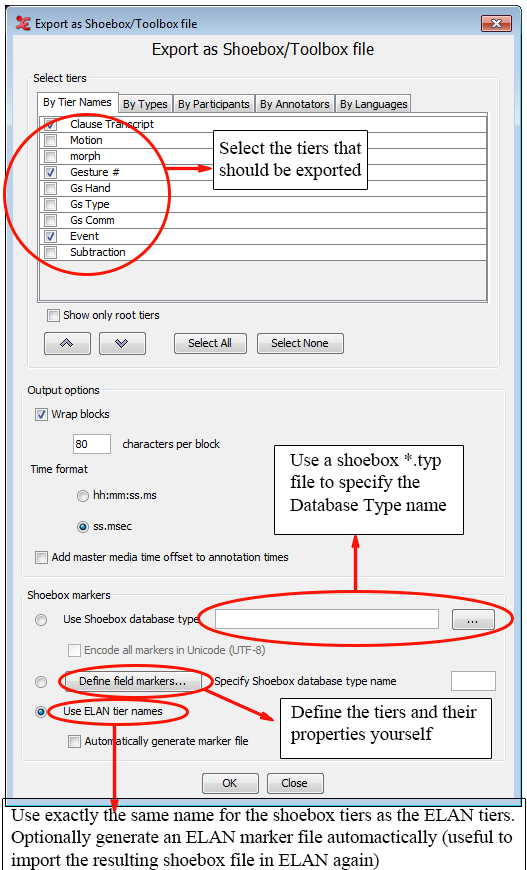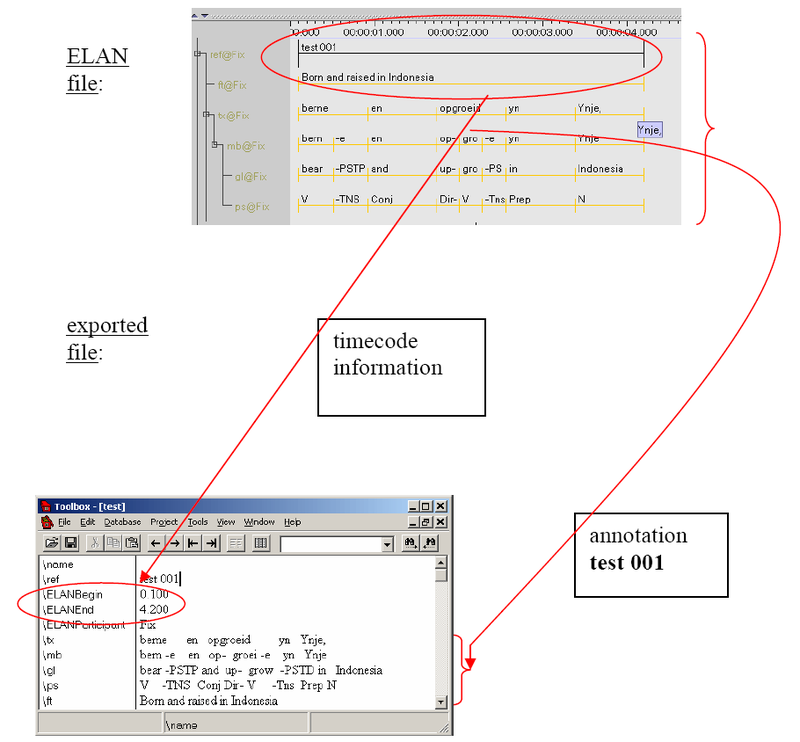Shoebox file
All Shoebox files that were imported into ELAN (see the section called “Shoebox file”) can be exported back into Shoebox. In this case, the time code information is kept.
To export a file into Shoebox, do the following:
Click on menu.
Click on .
The dialog box appears. Make a choice and click on to continue.
Figure 55. Shoebox Export dialog window

By selecting you can let ELAN wrap a whole block if one of the line in a block is longer than a specified number of character (default is 80 characters).
By selecting you can add to the annotation times the time offset from the master media that originated from the synchronization of media files (see the section called “Synchronizing video files”).
Specify the name and directory of the exported file, e.g.:
Figure 56. Name and directory of exported file

Click to export the file; otherwise click to exit the dialog box without exporting the file.
The file is exported as a
*.txt|*.sht|*.tbtfile.If there already exists a file of the same name, ELAN will ask you whether or not it should overwrite the existing file, e.g.:
Figure 57. File Exists

Open the exported file in Shoebox.
It contains the following information:
All tiers and annotations.
Each ELAN parent annotation (including all its referring annotations) corresponds to one Shoebox record. E.g., in the illustration below, the ELAN parent annotation “Ligya-001” corresponds to the Shoebox record “Ligya-001”.
The time code information for each parent annotation.
Each ELAN parent annotation (i.e., each Shoebox record) contains the additional field markers \ELANBegin and \ELANEnd (i.e., the begin and end time of the parent annotation).
This time code information allows you to import the Shoebox file back into ELAN, without having to manually re-align the file (see the section called “Shoebox file”).
Figure 58. ELAN file and exported file
